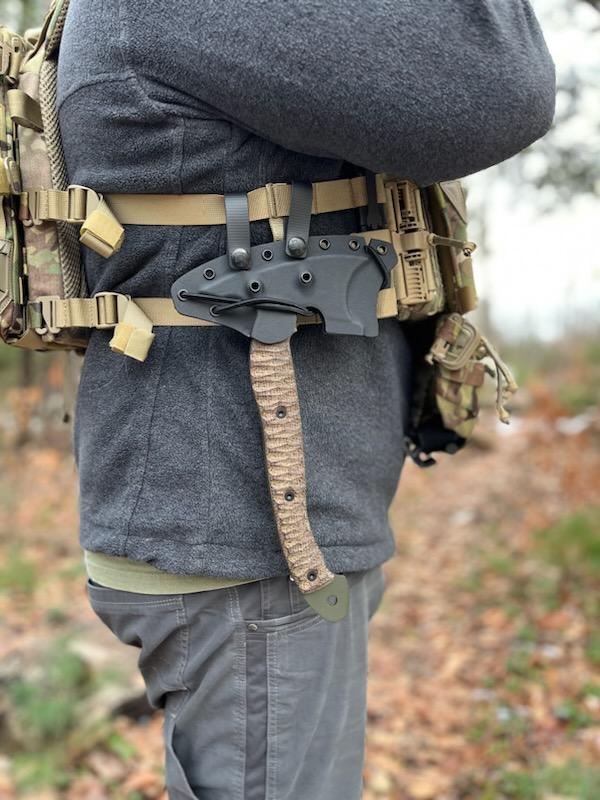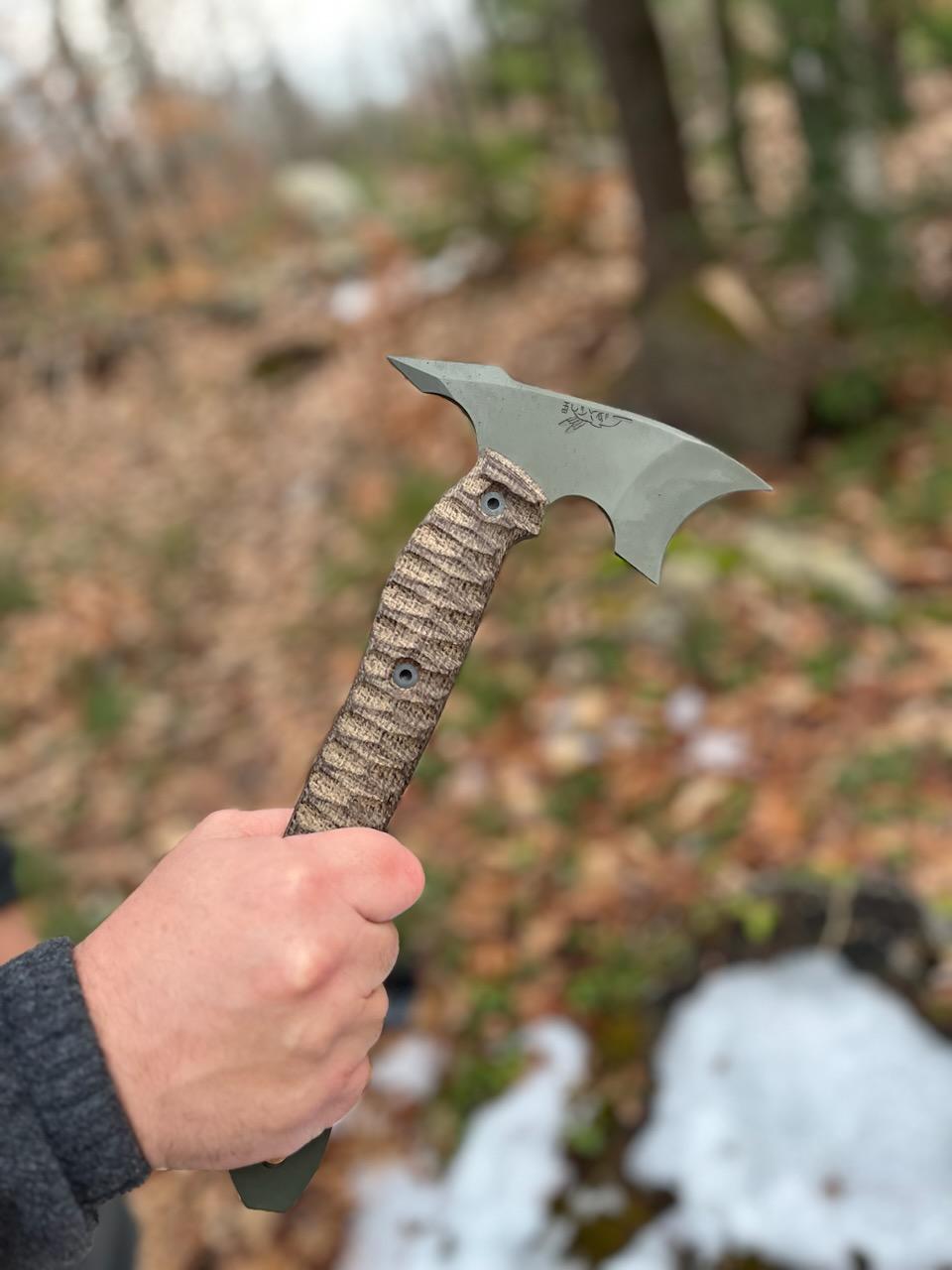By: Greg Chabot
Photos by Sasha Steadman
The Tomahawk is an all-American weapon used in battle by native tribes, and later used by European settlers and their descendants through the ages. During the GWOT, Tomahawks were popular with members of special operations units to use as a weapon or as a breaching tool. The most famous users of hawks during the GWOT were members of DEVGRU (SEAL Team Six). A quick search will bring up many images of troops carrying hawks on operations with the most well-known Tomahawks being made by Winkler.
Earlier in the year I was on the hunt for a new hawk to replace a cheap one that I had broken. I got very lucky in being able to acquire a hawk from Half Face Blades of San Diego, California. I own other products from this company and have no complaints. Wanting something different, I chose the Crescent version of their Tomahawks. I use my own funds to keep me honest and I received no compensation from Half Face Blades.
Designed by retired Navy SEAL and Half Face owner Andrew Arrabito, the Crescent hawk uses two spike points with a cutting edge in between. According to Andy, the two spikes will create two entry holes resulting in a weak point between the holes, allowing the head to cause as much damage as possible to the target.
Specs for the HFB Crescent Hawk:
- S35VN Steel with various finish options. I chose OD Green Cerakote.
- Weight 1 lb. 1 oz.
- 12” Overall length
- Head is 6” width
- Blade cutting edge is 2.5”
- The Spike is 2” long with a thickness of .21”
For the handle I chose brown micarta, HFB offers various materials to suit end users’ taste. Like their knife offerings, HFB hawks come with a suede lined Kydex sheath for quiet deployment of the hawk. It is held in place by a quick-release bungee system that keeps it secure while moving around. The sheath comes with double belt loops for various mounting options for end users. For photos I mounted the Crescent hawk to the cummerbund of my plate carrier.

The handle is long enough for a two-handed grip if needed. The micarta makes it easy to grasp the hawk with gloves. I did my mineral oil/blood simulation test and the hawk stayed put in my hands while testing it on targets. The overall balance and light weight make this an excellent offensive/defensive edged weapon. The cutting edge is razor-sharp and combined with the spike points makes for some ghastly wounds on test targets! I would not want to be on the receiving end of this weapon or any edged weapon for that matter! For targets I used an old heavy bag and pumpkins, the hawk made quick work of both. It did enough damage I had to toss the heavy bag after testing. The sharpness of the cutting edge is also good for slashing attacks. The spike worked great to make murder holes in the plywood wall of an old shed.
Though designed more as an offensive/defensive weapon, the Crescent hawk can be used in a pinch for camp tasks. I would advise a more traditional hawk design from Andrew for end users looking for a dual-purpose Tomahawk. On smaller trees and branches the hawk did a good job chopping. If you are in a situation that requires the chopping of larger limbs or trees, you will have your work cut out for you. As I previously stated this is a fighting weapon, not a survival axe. While chopping, the handle did not chafe or cause blisters on my hands.
Overall, I am happy with my Crescent Tomahawk purchase. It is handmade by craftsmen and the quality can’t be beat. Though pricey, they are worth every cent in my book, and it will be the last hawk I’ll ever need. Whether you want one for the wall or the field, check out the offerings from Half Face Blades, you won’t be disappointed.
Big thank you to Andrew Arrabito for his prompt answers to my questions. I appreciate your patience brother.

